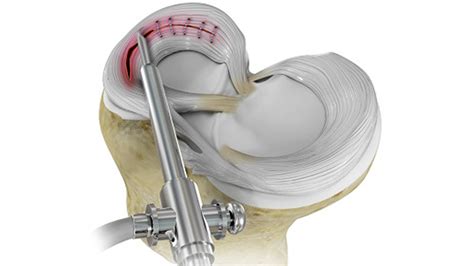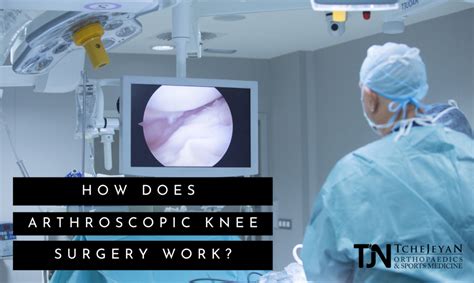Intro
Explore torn meniscus surgery options, including arthroscopy, meniscectomy, and repair, to alleviate knee pain and restore function, with minimally invasive techniques and rehabilitation.
The meniscus is a crucial component of the knee joint, providing cushioning and support to the cartilage and bones. However, it can be prone to injuries, particularly tears, which can be debilitating and affect daily activities. A torn meniscus can be treated with various surgical options, each with its benefits and drawbacks. In this article, we will delve into the world of torn meniscus surgery options, exploring the different types of procedures, their mechanisms, and the steps involved.
The importance of understanding torn meniscus surgery options cannot be overstated. With the rise of sports-related injuries and an increasingly active population, the demand for effective treatments has never been higher. Furthermore, advancements in medical technology have led to the development of innovative surgical techniques, offering patients a range of choices tailored to their specific needs. Whether you are an athlete seeking to return to competition or an individual looking to alleviate chronic pain, it is essential to be informed about the available surgical options.
The decision to undergo surgery for a torn meniscus is a significant one, and it is crucial to weigh the pros and cons of each procedure. Factors such as the severity of the tear, overall health, and lifestyle play a significant role in determining the most suitable course of treatment. In addition, the expertise of the surgeon and the quality of post-operative care can greatly impact the success of the procedure. As we explore the various torn meniscus surgery options, it is essential to consider these factors and how they may influence the outcome of the treatment.
Torn Meniscus Surgery Overview

Meniscectomy
Meniscectomy is a surgical procedure that involves the removal of the damaged meniscus tissue. This procedure is typically performed when the tear is too large to be repaired or when the meniscus is severely degenerated. Meniscectomy can be performed using arthroscopy, a minimally invasive technique that involves inserting a small camera and surgical instruments through tiny incisions. The benefits of meniscectomy include reduced pain and inflammation, as well as improved mobility and function. However, it is essential to note that meniscectomy may increase the risk of osteoarthritis in the long term.Meniscal Repair

Meniscal Transplantation
Meniscal transplantation is a surgical procedure that involves transplanting a healthy meniscus tissue from a donor into the affected knee. This procedure is typically performed when the meniscus is severely damaged or missing. Meniscal transplantation can be performed using arthroscopy or open surgery, depending on the size and location of the transplant. The benefits of meniscal transplantation include restoring the meniscus function, reducing pain and inflammation, and improving mobility and function.Arthroscopic Surgery

Open Surgery
Open surgery is a traditional surgical technique that involves making a larger incision to access the affected area. This technique is typically used for meniscal transplantation or when arthroscopic surgery is not feasible. The benefits of open surgery include improved visualization and access to the affected area, as well as the ability to perform more complex procedures.Post-Operative Care

Rehabilitation Exercises
Rehabilitation exercises play a vital role in the recovery process after torn meniscus surgery. The goal of rehabilitation exercises is to improve strength, flexibility, and range of motion. A typical rehabilitation program includes exercises such as quadriceps sets, straight leg raises, and knee bends. It is essential to progress gradually and avoid overexertion to prevent complications.Risks and Complications

Prevention
Prevention is key to avoiding torn meniscus surgery. The best way to prevent meniscus tears is to maintain a healthy weight, engage in regular exercise, and avoid high-impact activities. Additionally, wearing proper protective gear and using proper technique during sports and activities can help reduce the risk of injury.Conclusion and Next Steps

We invite you to share your thoughts and experiences with torn meniscus surgery in the comments below. If you have any questions or concerns, please do not hesitate to reach out. Additionally, if you found this article informative and helpful, please share it with your friends and family who may be struggling with meniscus tears.
What are the symptoms of a torn meniscus?
+The symptoms of a torn meniscus include pain, swelling, and stiffness in the knee, as well as locking or catching sensations. In some cases, a torn meniscus can cause instability or giving way of the knee.
How long does it take to recover from torn meniscus surgery?
+The recovery time for torn meniscus surgery varies depending on the type of procedure and individual factors. Generally, it can take several weeks to several months to recover from meniscectomy or meniscal repair, while meniscal transplantation may require a longer recovery period.
Can I return to sports after torn meniscus surgery?
+Yes, it is possible to return to sports after torn meniscus surgery. However, it is essential to follow a gradual rehabilitation program and obtain clearance from your surgeon before resuming high-level activities.
What are the risks of not treating a torn meniscus?
+If left untreated, a torn meniscus can lead to further damage to the surrounding cartilage and bones, increasing the risk of osteoarthritis and chronic pain.
How do I choose the best surgeon for torn meniscus surgery?
+When choosing a surgeon for torn meniscus surgery, consider factors such as experience, qualifications, and patient reviews. It is essential to find a surgeon who is skilled and knowledgeable in the latest surgical techniques and has a good track record of successful outcomes.
